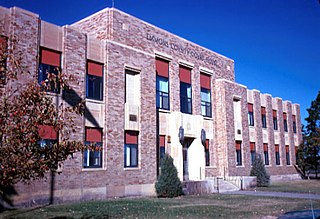
Emmons County is a county in the U.S. state of North Dakota. As of the 2020 census, the population was 3,301. Its county seat has been Linton since 1899.
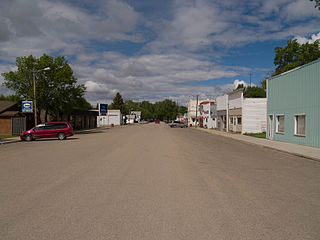
Wimbledon is a city in Pierce Township, Barnes County, North Dakota, United States. The population was 178 at the 2020 census.
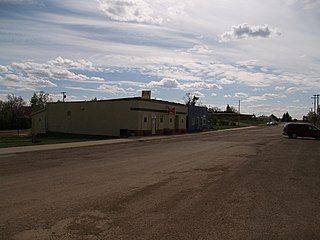
Golva is a city in Golden Valley County, North Dakota, United States. The population was 84 at the 2020 census. Golva was founded in 1915.
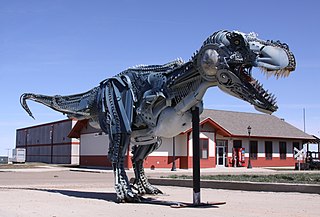
Faith is a city in the northeastern corner of Meade County, South Dakota, United States. The population was 367 at the 2020 census. The most complete Tyrannosaurus rex skeleton known, Sue, was discovered approximately 15 miles (24 km) northeast of Faith in August 1990.

Buckley is a city in Pierce County, Washington, United States, founded in 1882. The population was 5,114 at the 2020 census. Buckley sits below Mount Rainier and is well known for hosting the annual Log Show.

Van Hook is a thriving resort community built on the shores of Lake Sakakawea. The town was disbanded in the 1950s with the flooding of Lake Sakakawea and for a very short period of time was classified as a ghost town in the north central United States, located in Van Hook Township in Mountrail County, North Dakota. The original town site was mostly left not flooded when Lake Sakakawea was formed in the 1950s behind Garrison Dam.

Omemee is a ghost town in Bottineau County in the U.S. state of North Dakota. It was a railroad hub in the early 1910s, located at the junction of two major railroads, the Soo Line Railroad and the Great Northern Railway. Incorporated as a city in 1902, Omemee has been abandoned since 2003.
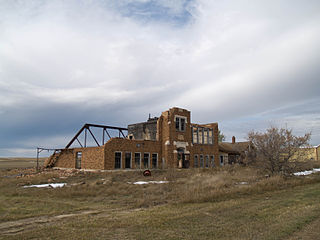
Wheelock is a ghost town in Wheelock Township, Williams County, in the northwestern part of the U.S. state of North Dakota. In 1938, the Federal Writers' Project found a population of 115 in Wheelock. In the 1990 census, the population was 23. All census population figures after 1990 are estimates. The town was disincorporated in 1994.

Temple is ghost town located in Williams County, North Dakota, United States. There are some remaining structures which include: a small garage, a couple small outbuildings and a couple caved-in houses. In 2003, one of the last two business buildings was either torn down or burned. The school was moved in 2010 and reportedly used as an addition to a house. The last business building collapsed in 2010, and was disposed of by 2012. One of the few remaining abandoned houses was destroyed in 2015. Also in 2015, the church was burned and razed, the reason is said to be because "it had deteriorated to the point that it became dangerous."
Hartland is a ghost town in Ward County, North Dakota, United States. It is west of Carpio and north of Berthold.
Isabel is an unincorporated community in Benson County, North Dakota, United States.
Gorham is an unincorporated community and ghost town in Billings County, North Dakota, United States. The community was founded c. 1899 and became heavily populated by Ukrainian immigrants. Gorham served as a hub for the rural community, containing a Ukrainian Catholic church, general store, post office, and other businesses. The town was officially abandoned in 1972, although rural farms still exist in the locale.

Tinton is a ghost town in the Black Hills of Lawrence County, South Dakota, United States. Founded in 1876, it started out as a gold mining camp and later began to produce tin. It had a heavy decline in the early 20th century due to the decline in the mining industry, and the town was fully abandoned by the 1950s.
Flatiron, formerly known as Yellow Creek or Flat Iron City, is a ghost town in Lawrence County, South Dakota, United States. It was known for its highly successful gold mining.
Maitland, originally called Garden City and sometimes misspelled Midland, is a ghost town in Lawrence County, South Dakota, United States. It was a mining community that boomed during the Black Hills Gold Rush, but was abandoned by about 1915.
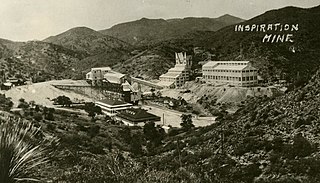
Inspiration is a ghost town in Gila County, Arizona, in the United States. It has an estimated elevation of 3,927 feet (1,197 m) above sea level. Inspiration was the company town for the Inspiration copper mine.
Heaton is an unincorporated community in Wells County, North Dakota, United States. It is located 20 miles west of Carrington. Heaton was heavily damaged by a tornado in 1907 and some blame the decline of the town on that event.
Fallon is an unincorporated community in Morton County, North Dakota, United States. Fallon is located about 35 miles southwest of Bismarck, North Dakota, roughly 8 miles northeast of Flasher, North Dakota, on the former Mandan-Black Hills stage trail. Another town located along this line is Saint Anthony Crossing, located about 4 miles northwest of Saint Anthony, North Dakota.












